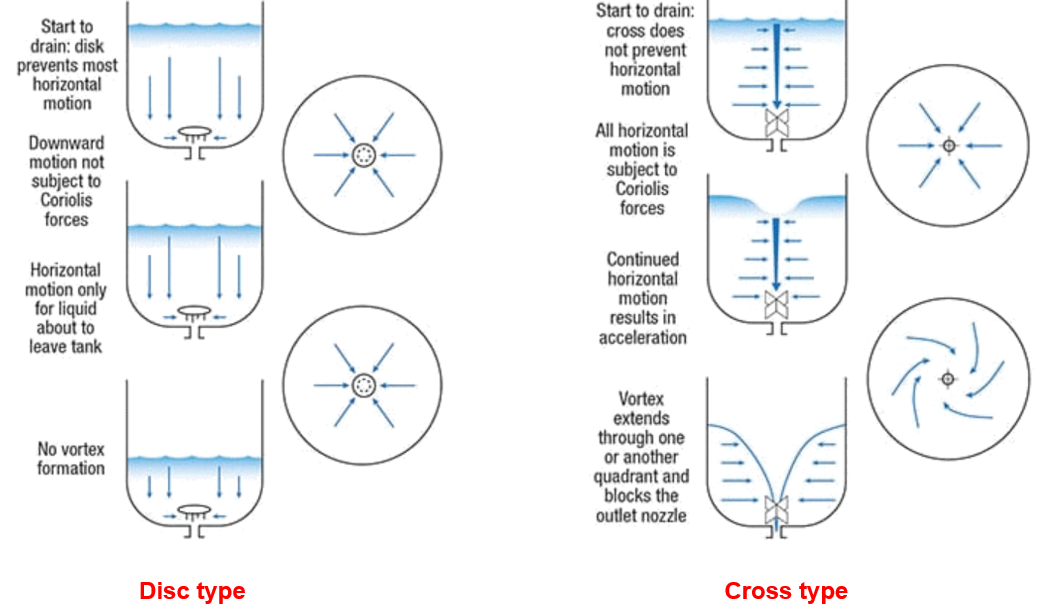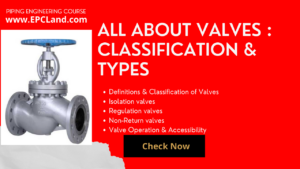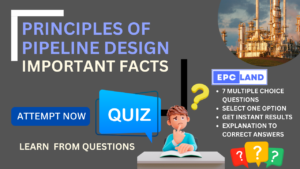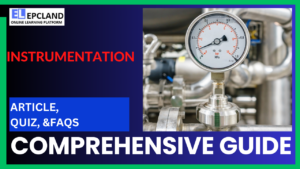
1. Obstruction of Smooth Flow: Effects of Vortices
How do vortices affect the flow of fluids through pipes and nozzles?
Explanation: Vortices obstruct the smooth flow of fluids through pipes and nozzles, causing a decrease in flow rate and system inefficiency.
2. Gas Entrainment and Two-Phase Flow: Effects of Vortices
What challenges are associated with the gas entrainment caused by rotating vortices?
Explanation: Gas entrainment from vortices can lead to reduced pump efficiency, increased corrosion, and unstable flow in the system.
3. Erosion of Pipes and Fittings: Effects of Vortices
What is the consequence of the constant swirling motion of a vortex near pipe walls?
Explanation: The constant swirling motion of a vortex near pipe walls can lead to increased erosion, resulting in leaks and equipment failure.
4. Pressure Drop and Increased Pumping Demand
What impact does the formation of a vortex have on the pressure in the system?
Explanation: The formation of a vortex can lead to a significant pressure drop in the system, requiring a higher pumping force to maintain the desired flow rate.
5. Additional Effects
Which of the following is NOT an additional effect of vortices on flow?
Explanation: Increased controllability is not an additional effect of vortices on flow. Vortices typically make the flow more difficult to control.
6. Reduced Heat Transfer
How do vortices affect the normal heat transfer processes in a fluid system?
Explanation: Vortices disrupt normal heat transfer processes, leading to reduced efficiency in cooling and heating applications.
7. Controllability of Flow
How do vortices impact the controllability of flow in a fluid system?
Explanation: Vortices make the flow more difficult to control, leading to process instability and unpredictable behavior.
Don’t miss the Related Topics on Vortex Breaker
| Related Topics on Vortex Breaker |
|---|
| Applications of Vortex Breakers |
| How Cooling Towers Work |
| Understanding the Cooling Towers |
Short Article on Effects of Vortices on Flow
Effects of Vortices on Flow:
You’ve identified the four main reasons why vortex formation is undesirable in fluid systems:
1. Obstruction of smooth flow: Vortices act as a rotating mass of fluid that can significantly obstruct the smooth flow of fluids through pipes and nozzles. This can cause a decrease in flow rate and lead to inefficient operation of the system.
2. Gas entrainment and two-phase flow: As vortices rotate, they can create a low-pressure region at their center. This low-pressure region can draw in gases from the surrounding environment, creating a two-phase flow. This presents several challenges, including:
- Reduced pump efficiency: Pumps are designed to handle liquids, not gas-liquid mixtures. The presence of gas can significantly reduce pump efficiency and lead to cavitation.
- Increased corrosion: The presence of gas can increase the rate of corrosion in pipes and other system components.
- Unstable flow: The presence of gas can make the flow in the system more unstable, leading to fluctuations in pressure and flow rate.
3. Erosion of pipes and fittings: The constant swirling motion of a vortex can create a high-velocity zone near the pipe walls. This high-velocity zone can erode the pipe walls and fittings, leading to leaks and equipment failure.
4. Pressure drop and increased pumping demand: The formation of a vortex can create a significant drop in pressure in the system. This pressure drop necessitates a higher pumping force to maintain the desired flow rate, increasing energy consumption and operating costs.
Additional effects:
- Increased noise: Vortices can generate significant noise due to their turbulent nature.
- Reduced heat transfer: Vortices can disrupt the normal heat transfer processes in the system, leading to reduced efficiency in cooling and heating applications.
- Reduced controllability: Vortices can make the flow in the system more difficult to control, leading to process instability and unpredictable behavior.
In conclusion, vortex formation can have several detrimental effects on the performance and efficiency of fluid systems. It’s crucial to take measures to prevent vortex formation by using appropriate design techniques and equipment, such as vortex breakers, to ensure the smooth and efficient operation of your system.
Table of Contents
Don’t miss the Course on Effective Isometrics Management: Check Now
Enrollment Link
Recommended courses (Published on EPCLand)
- Complete Course on Piping Engineering
- Basics of Piping Engineering
- Piping Layout Engineering
- Piping Material Engineering
- Piping Stress Analysis
- Material Requisitions
- Piping Material Specifications
- Valve Material Specifications
- Plant Design & Layouts-OISD 118
- Isometric Management
Library of Technical Articles
Don’t miss out the collection of 15+ articles on following topics:
- Basics of Oil and Gas Industry
- Valves
- Testing
- Tank
- Piping Bulk Items
- Pipe
- Metallurgy
- Piping Materials
- Layout
- Instrumentation
- Heat Exchanger
- Type of Contracts
- Codes and Standards
- ASTM Standards
- Articles on Piping Specialty Items
Video details of Complete Course on Piping Engineering
Why Enroll in the EPCLand
Proven Track Record– PTR
Activities & Achievements before launching EPCLand
- Published more than 50+ short courses
- 3000+ Enrolments
- More than 3,500,00 Minutes of watch hours in the last 2 years
- 4000+ Students in 100+ Countries
- Rating of 4+ out of 5
- 1000+ YouTube Videos
- 8K+ Subscribers
What Students will Learn
- Codes & Standards of the Energy Sector
- Piping Material Engineering
- Piping Layout Engineering
- Stress Analysis
Interesting facts
- All the published courses have been developed by Industry Experts with more than 2 decades of experience
- Content is based on Practical experience and real-time problems.
- Content is designed and organized in such a manner that it can be easily grabbed.
- Complete website, Blogs and Quiz sections are Planned, Designed and published by myself (About me: Atul Singla)
- Complete flexibility of Time & Location, Students can access the content from anywhere & anytime
- Moreover, once enrolled, the content can be access as many times as you want, which helps in understand the fundamentals in a better way.
Conclusion
In conclusion, our courses are meticulously crafted by industry experts with over two decades of hands-on experience. The content is rooted in practical knowledge, addressing real-time problems. The material is thoughtfully designed and organized for easy comprehension. Every aspect, from the website to blogs and quizzes, has been planned, designed, and executed by Atul Singla, ensuring a comprehensive and seamless learning experience. With the flexibility of accessing the content at any time and from any location, students have the freedom to learn on their terms. Furthermore, enrollment grants unlimited access, allowing learners to revisit the material as often as needed, fostering a deep understanding of the fundamentals.



